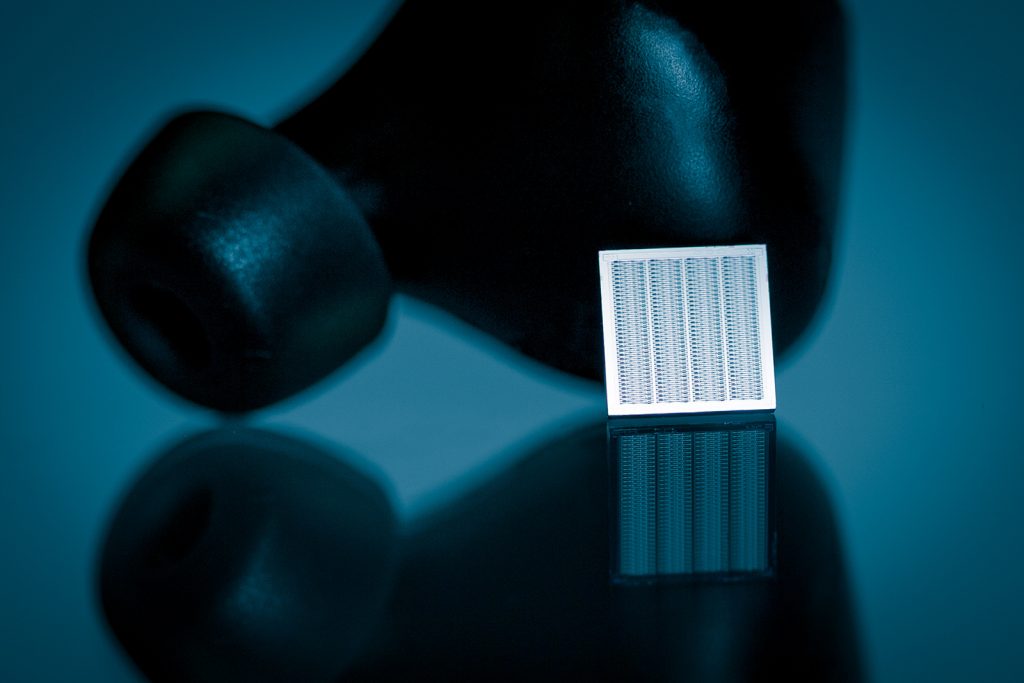Arioso Systems GmbH, a spin-off of the Fraunhofer Institute for Photonic Microsystems IPMS, has developed microspeakers for wireless in-ear headphones that are up to ten times smaller than traditional microspeakers and are constructed entirely of silicon.
According to a press release issued by the company, The energy-efficient MEMS speakers, which are now in the prototype stage, could play a part in expanding the range of functionalities offered by tiny headphones in the future, such as quick translations and health monitoring features. This has been made feasible by a novel sound transducer mechanism that eliminates the membrane, which is the central component of traditional speakers.
Unlike conventional speakers and the few other micro-electromechanical system (MEMS) speakers on the market, Arioso Systems’ tiny MEMS speakers are made entirely of silicon and do not contain a membrane or magnets. They can be mass-produced cheaply using normal CMOS techniques, making them easy to scale for the mass market — an advantage over competitors’ technologies, which now rely on piezo materials, making the manufacturing process more complicated and costly.
The speakers are powered by a novel, energy-saving sound transducer concept. This is based on Nanoscopic Electrostatic Drive (NED) technology, which was created by Holger Conrad – a founding member of Arioso Systems GmbH – at Fraunhofer IPMS during his time there.
The innovative MEMS sound transducer has no membrane, unlike traditional speakers. It has been replaced by a silicon chip containing a huge number of narrow bending beams, each measuring 20 metres. Air exits from the chambers and flows into the chambers where electrostatic actuators move through apertures on the top and bottom of the chip. These NED actuators bend when a voltage from an audio source is applied. Sound is produced as a result of the vibrations.
The innovative MEMS sound transducer has no membrane, unlike traditional speakers. It has been replaced by a silicon chip containing a huge number of narrow bending beams, each measuring 20 meters. Air exits from the chambers and flows into the chambers where electrostatic actuators move through apertures on the top and bottom of the chip. These NED actuators bend when a voltage from an audio source is applied. Sound is produced as a result of the vibrations.

